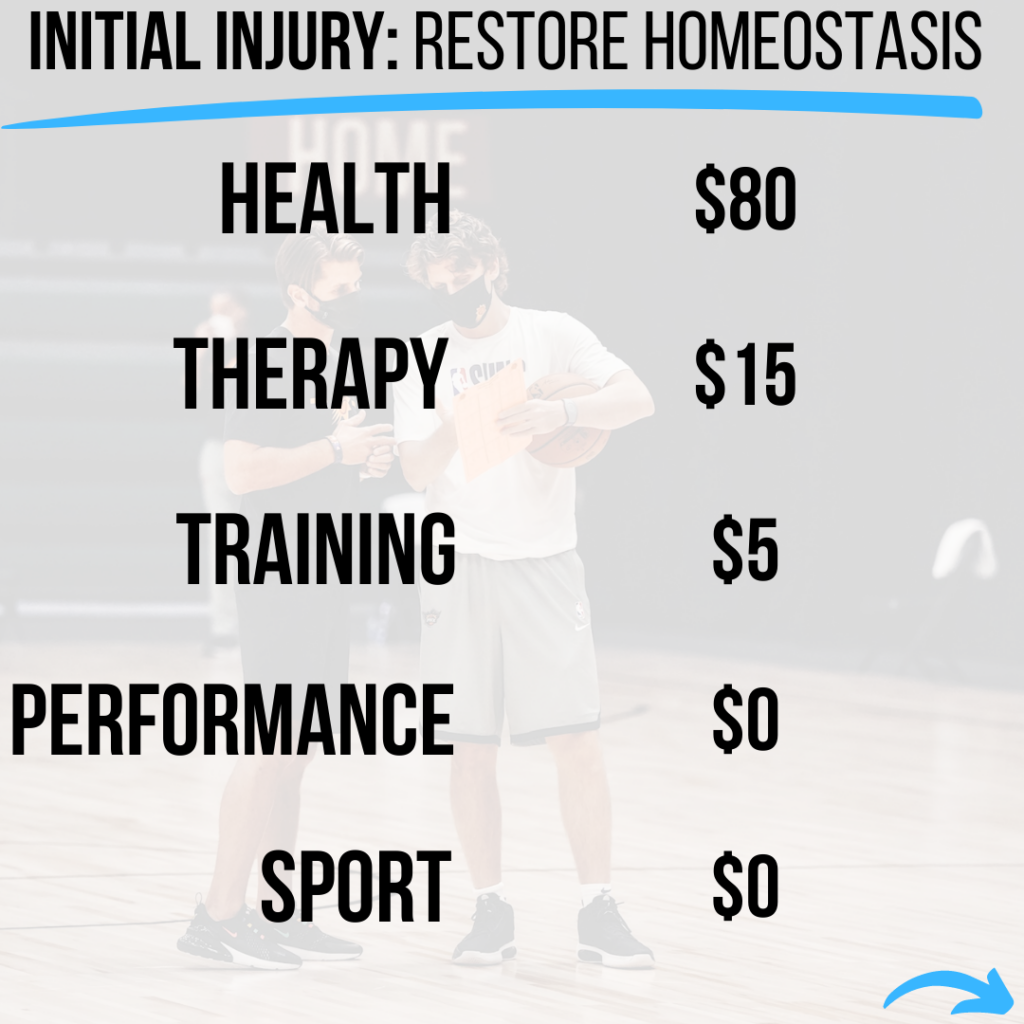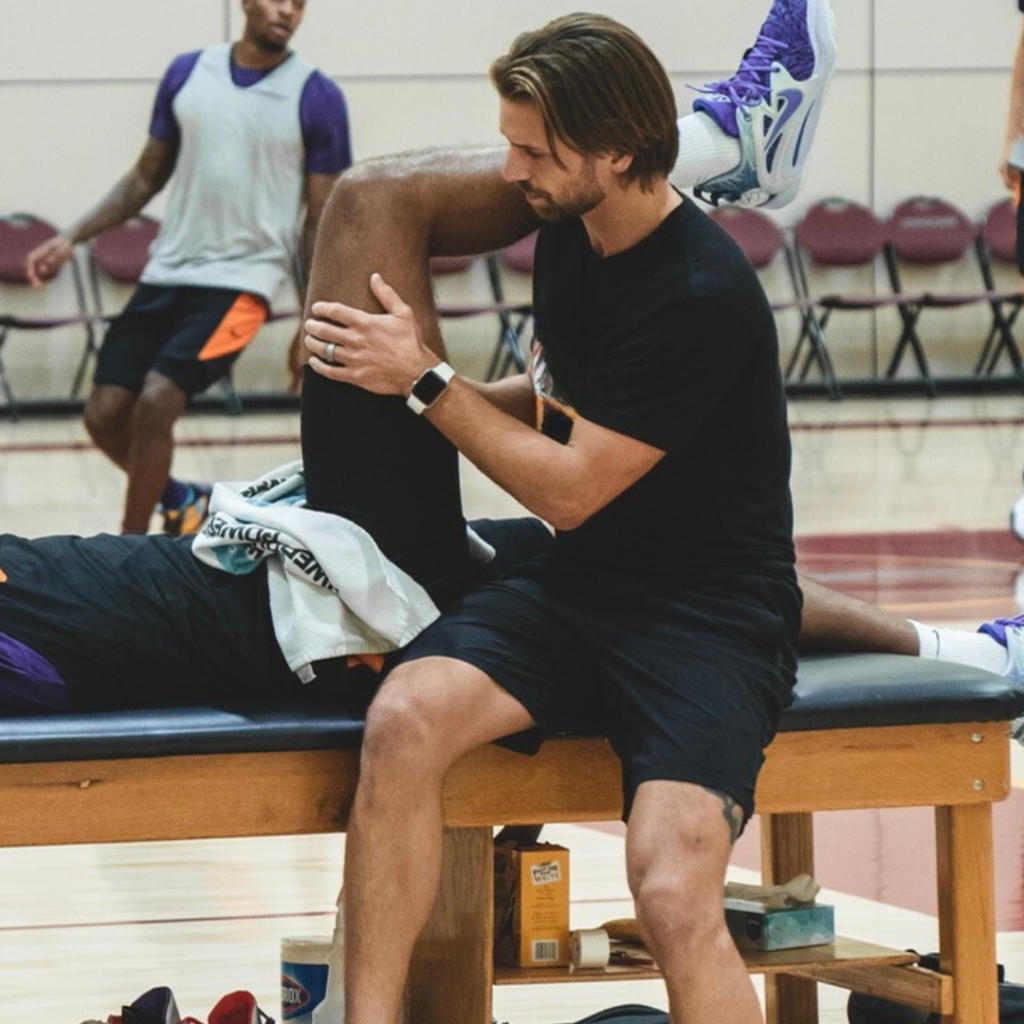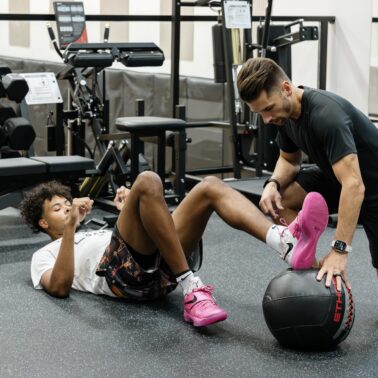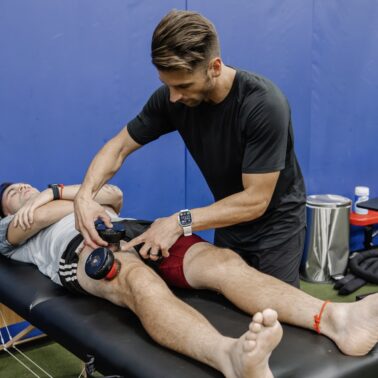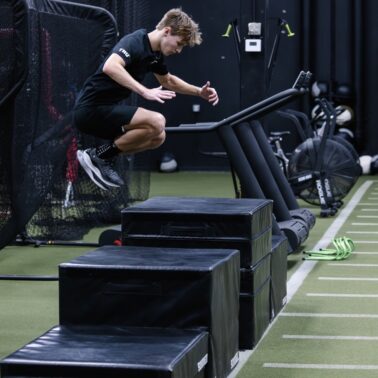“All models are wrong, but some are useful.”
George box, British statistician
What You Will Learn
- What are the 4 Principles of Return to Play.
- How to apply the 4 Principles.
- Advice on how to effectively manage team dynamics during return to play.
A big thank you to my mentor and friend Bill Hartman for teaching me the importance yet limitations of creating a model. The intent of a model is to organize thoughts, biases, and processes into a digestible version that is repeatable. The 4 Pillars of Sports Rehab is my working model for how I approach rehab and training for athletes.
In terms of rehab and training I believe no one model is the answer. The very beings of which we are intervening on are humans. They are the most complex living organisms on planet Earth. To think a singular model or way of thinking is the only way to do something is actively choosing to ignore the complexity of working with humans. Similar to politics, religions, and diets, we all have our beliefs when it comes to training and rehab.
The 4 Pillars are The Continuum, 3P Framework, ABCDEs, and The Bank. More detailed articles will follow that dive deeper into each of the 4 Pillars of Sports Rehab.
The continuum
How do you prioritize different phases of rehab or return to play? The Continuum is a mental model that clearly defines what each phase of rehab is. Each phase has a specific theme that is the priority. The five themes in the this pillar of the sports rehab model are:
HEALTH: restore homeostasis
THERAPY: part task learning strategies
TRAINING: whole task learning strategies
PERFORMANCE: maximize capabilities
SPORT: organized chaos

3p Framework: Principles, Process, Plans
The 3P Framework all started in The Purple Room at IFAST in Indianapolis (IYKYK). The goal of 3P is to create a consistent way of thinking. I at times fall victim to social media and want to change my rehab plans based on some new technique or research. It’s hard to be consistent, because consistent is boring. But consistent is what works, and what makes for great rehab. The key components of this pillar in the sports rehab model are principles, process, and plans.
principles
Rehab has existed for decades. From my perspective, there hasn’t been many breakthroughs lately that are truly changing the foundations of rehab. Why is that? Because speaking from an evolution perspective, despite our modern world around us evolving rapidly, physiology of our species as humans as not changed all that much in the past thousands of years. Below are my 10 foundational Principles to rehab.
- Coordinate Movement
- Force Management
- Fitness
- Commit & Learn
- Context Matters
- N=1
- Prioritize & Simplify
- Invest in Preparation, Not Prediction
- Treat the Person, Not the Diagnosis
- Consistency is King
process
My working definition of a Process is defined as a series of steps taken in order turn Principles from theory into actionable, pragmatic solutions.
Successful rehab requires a consistent Process. The Process must be structured enough where it repeatable, yet flexible enough to adapt to the chaos of sports teams. Two key ideas that exist in my Process are Experiment & Exposure. I believe in the phrase “Safe to fail experiments.” These types of experiments are providing interventions to determine if this is the right one. They also need to be safe enough that in the event the intervention fails at achieving the outcome, then at least we created no harm.
Exposure is the premise of almost all things that desire change in life. Want to lose weight? Gradually exposure yourself to lower calories. Want to overcome PTSD from a car crash? Gradually exposure yourself to short, slow car rides.. Want to grow bigger biceps? Gradually expose yourself to heavier weights. Rehab is the same. Gradually expose the athlete to necessary stimuli to safely achieve a goal.
plans
I define a Plan as a course of action intended to amplify desirable adaptations or dampen undesirable adaptations.
Plans are exactly how I control what I can control and manage the rest. I often use the phrases “amplify desirables” and “dampen undesirables.” Every day rehab is context dependent based on the desired outcomes for the day or for that phase. I want to amplify, or repeat, the interventions that are producing my desirable adaptations that achieve a goal. I want to dampen, or reduce, the interventions that are producing undesirable adaptations towards that goal.
In the context of pain, I want to repeat the exercises that reduce or minimize pain and reduce the exercises that provoke pain. For ankle swelling, I want to repeat the modalities that are decreasing swelling and reduce the amount of activity that is increasing swelling. In the context of jumping performance, I want to repeat the exercises that improve eccentric rate of force development (eRFD) and reduce the exercises that are decreasing eRFD.
Plans must be flexible based on context.
Processes must be consistent but adaptable.
Principles must be concrete to establish a belief system.
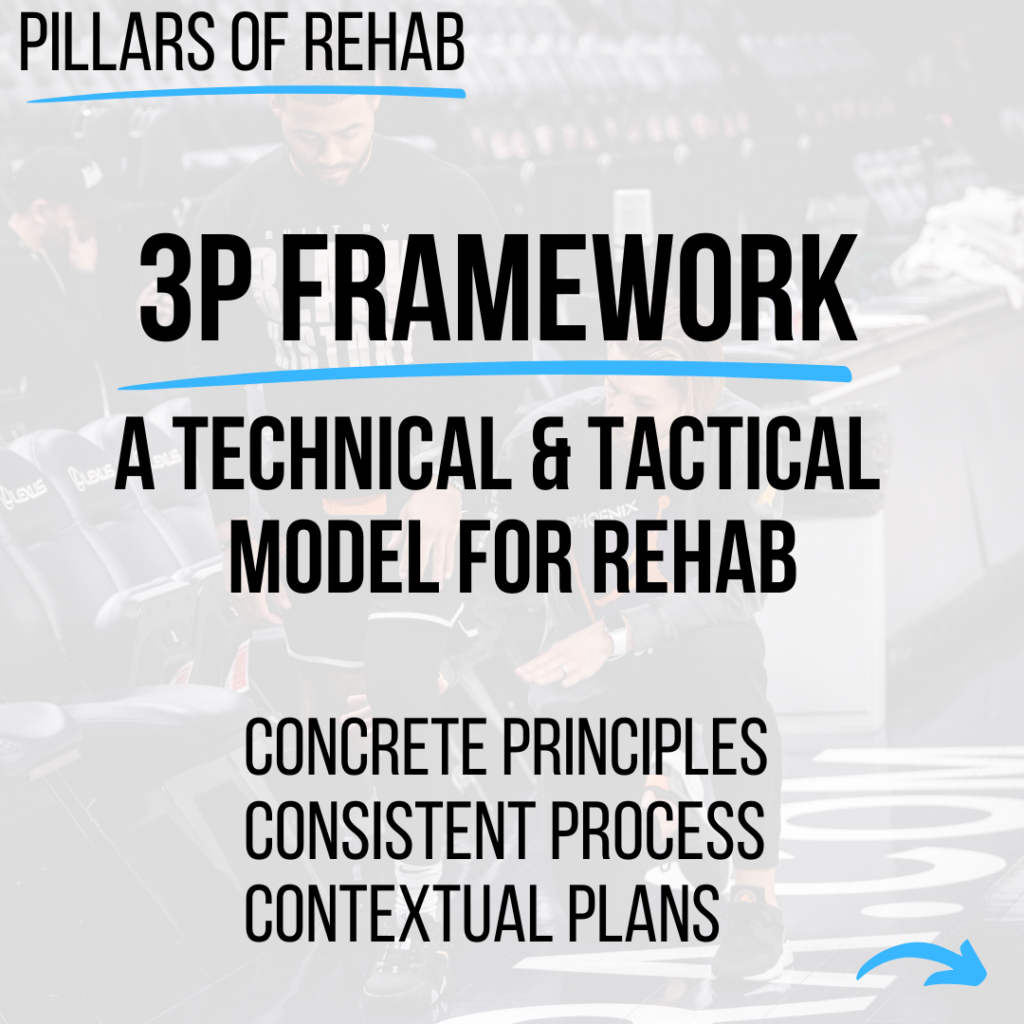
ABCDE
The next component of Pillars in Sports Rehab is ABCDE. The most frequent issue I struggle with in rehab and hear of colleagues struggling with in rehab is Accountability. I have (2) degrees, have worked in multiple professional sports, and read dozens of books. So have many of my colleagues too. The X’s & O’s of rehab I have a good grasp on. So do my colleagues.
We can have the best rehab plan laid out, but if we cannot establish Accountability with our athletes, with our organization, and with our colleagues – then our rehab will fail. The ABCDE is my model for how to create Accountability within the sports rehab modelThe model goes as follows:
Accountability: showing up for what you set out to do.
Boundaries: establishing order and minimizing setbacks.
Communication: outline how and when team members can help.
Deadlines: showcase the journey of rehab.
Expectations: manage emotions and timelines.
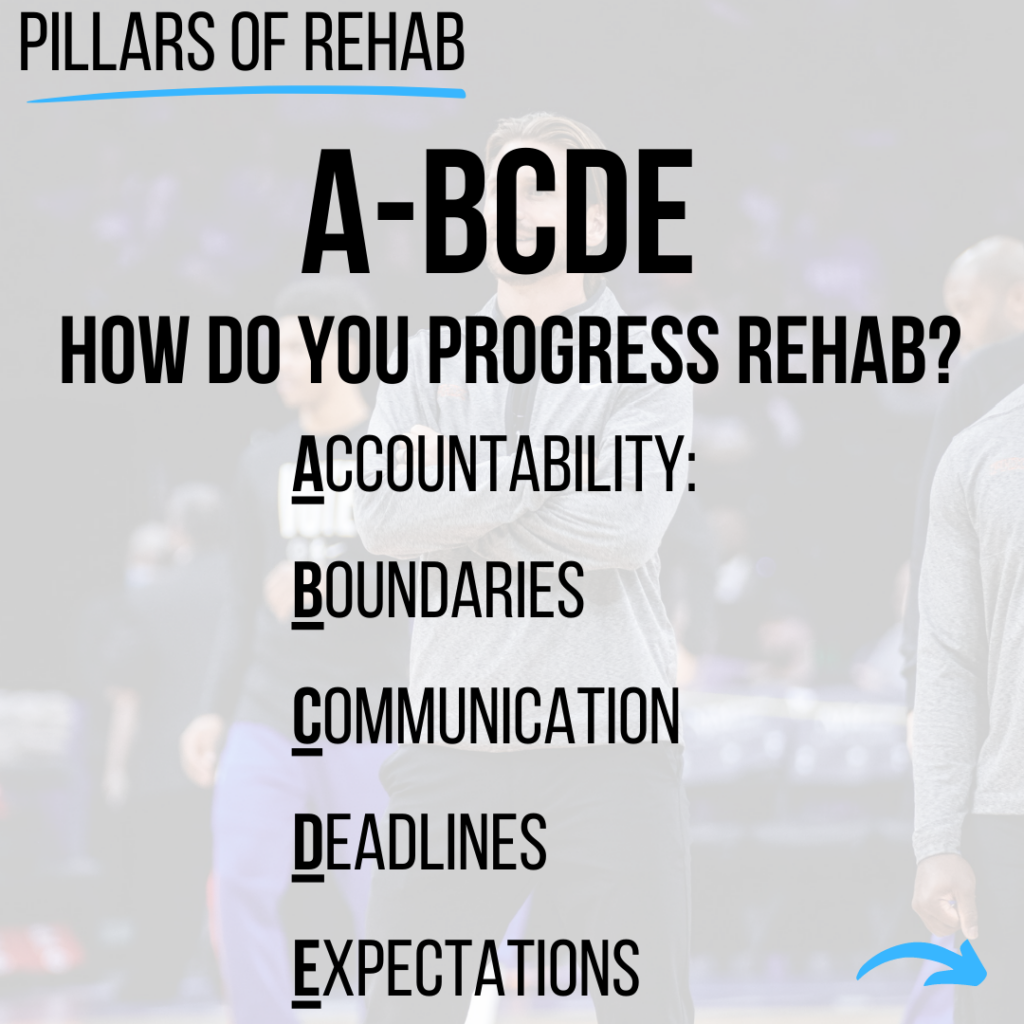
the Bank
The final component in the Pillars of Sports Rehab is The Bank.
An injury happens. The athlete wants to be better yesterday. Many people on the medical and performance staff want to help and be in the trenches. Coaches want to know when they can be back on the court.
This story plays out frequently for me during a rehab case. The mental model I have created to manage the different departments is called The Bank.
Everyone understands money. Everyone understands a budget. We can’t buy everything all the time. In rehab, we can’t attack every athletic quality every day. We must budget our time, and our resources, to focus on the most important goal for that phase.
